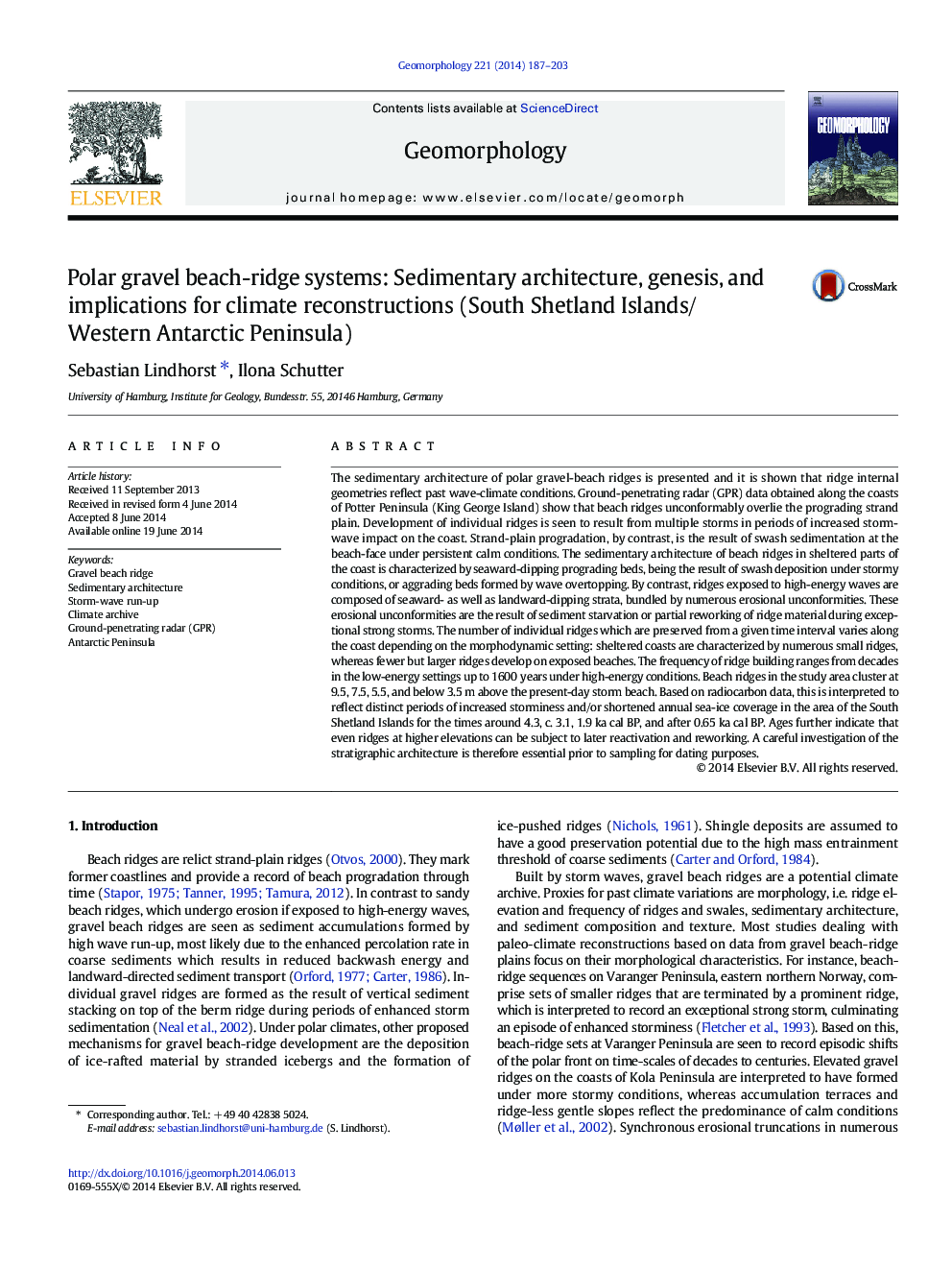| کد مقاله | کد نشریه | سال انتشار | مقاله انگلیسی | نسخه تمام متن |
|---|---|---|---|---|
| 4684388 | 1635428 | 2014 | 17 صفحه PDF | دانلود رایگان |
• The internal sedimentary architecture of polar gravel beach ridges is presented.
• Beach-ridge internal geometries reflect past storm-wave run-up.
• Sheltered areas exhibit numerous low ridges, exposed coasts fewer but larger ridges.
• More complete climate records are expected from beach ridges on sheltered coasts.
The sedimentary architecture of polar gravel-beach ridges is presented and it is shown that ridge internal geometries reflect past wave-climate conditions. Ground-penetrating radar (GPR) data obtained along the coasts of Potter Peninsula (King George Island) show that beach ridges unconformably overlie the prograding strand plain. Development of individual ridges is seen to result from multiple storms in periods of increased storm-wave impact on the coast. Strand-plain progradation, by contrast, is the result of swash sedimentation at the beach-face under persistent calm conditions. The sedimentary architecture of beach ridges in sheltered parts of the coast is characterized by seaward-dipping prograding beds, being the result of swash deposition under stormy conditions, or aggrading beds formed by wave overtopping. By contrast, ridges exposed to high-energy waves are composed of seaward- as well as landward-dipping strata, bundled by numerous erosional unconformities. These erosional unconformities are the result of sediment starvation or partial reworking of ridge material during exceptional strong storms. The number of individual ridges which are preserved from a given time interval varies along the coast depending on the morphodynamic setting: sheltered coasts are characterized by numerous small ridges, whereas fewer but larger ridges develop on exposed beaches. The frequency of ridge building ranges from decades in the low-energy settings up to 1600 years under high-energy conditions. Beach ridges in the study area cluster at 9.5, 7.5, 5.5, and below 3.5 m above the present-day storm beach. Based on radiocarbon data, this is interpreted to reflect distinct periods of increased storminess and/or shortened annual sea-ice coverage in the area of the South Shetland Islands for the times around 4.3, c. 3.1, 1.9 ka cal BP, and after 0.65 ka cal BP. Ages further indicate that even ridges at higher elevations can be subject to later reactivation and reworking. A careful investigation of the stratigraphic architecture is therefore essential prior to sampling for dating purposes.
Figure optionsDownload as PowerPoint slide
Journal: Geomorphology - Volume 221, 15 September 2014, Pages 187–203
